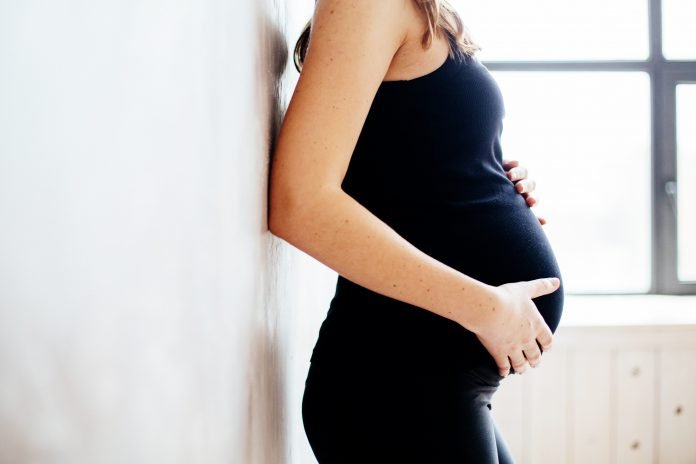In this month’s issue of Retail Pharmacy magazine, we take a look at the common dermatologic condition occurring in pregnancy: Pruritic urticarial papules and plaques of pregnancy (PUPP).
What is PUPPP?
PUPPP is the most common dermatologic condition occurring in pregnant patients, says Australian College of Midwives Principal Midwifery Officer Kellie Wilton.
“It’s an itchy, bumpy rash that starts in the stretch marks of the abdomen in the last three months of pregnancy then clears with delivery,” she said. “The condition typically develops in the third trimester of pregnancy or immediately in the postpartum period.”
Although PUPPP is a nuisance, it’s not considered a serious ailment and typically resolves within two weeks after delivery.
“It’s important for pregnant women to know there is no increased risk to their baby, and therefore there should be no sequelae suffered by the mother or her baby due to this condition,” Ms Wilton said.
However, another skin issue, intrahepatic cholestasis of pregnancy (ICP), can look like PUPPP, so it’s always important for patients to seek a midwife or doctor’s advice for an accurate diagnosis.
ICP complicates mainly between 0.2 per cent and two per cent of pregnancies and can lead to increased foetal risks in pregnancy.1
“ICP is linked to increased bile acid during pregnancy and can destroy the placenta, leading to preterm birth or, in very rare cases, stillbirth,” Ms Wilton said. “As such, it’s very important to have it investigated before going forward with PUPPP treatment.”
Causes and risk factors
Among the risk factors for the development of PUPPP are rapid, excessive weight gain and multiple gestation pregnancy, such as twins.2
“It’s thought the rapid stretching of the skin causes an inflammatory reaction due to damaged connective tissue, resulting in the urticarial or hive-like lesions,” Ms Wilton said.
PUPPP more often occurs in women having boys (about 70 per cent of cases, according to Ms Wilton). Researchers are looking at the possibility that male DNA acts as a skin irritant.
“However, because 30 per cent of cases are in women who give birth to girls, this cannot be the only cause,” Ms Wilton said.
Familial associations have also been reported, so a pregnant woman may be at risk if other family members have previously developed PUPPP.
Taming the itch
Ms Wilton says women often seek treatment for symptomatic relief due to the intense itching.
“Topical corticosteroids are considered the first line of treatment for PUPPP in cases when the itching is localised, sometimes in conjunction with oral antihistamines,” she said.
“For patients with a widespread, intensely pruritic rash or those with inadequate response to topical therapy, a short course of systemic glucocorticoids may be prescribed. Other treatments which may provide symptomatic relief include the use of cool, wet compresses and oatmeal baths.”
The key things to avoid, says Ms Wilton, are scratching and heat. Wearing clothes of synthetic material is also best avoided.
Scrolling for solutions
Given the intensity of the itchiness caused by PUPPP, many sufferers turn to social media for camaraderie and advice. This presents an opportunity for healthcare professionals to engage with and educate patients in a non-traditional setting.
A study published last year explored online discourse surrounding PUPPP to illuminate any potential space for healthcare provider intervention.3
From Instagram, 428 posts were analysed as part of the research, which found that 73.8 per cent of posts were created by mothers who experienced PUPPP.
Pictures of the rash and testimonies were the common themes, and blog posts received the most likes and comments on average
The research found patients are seeking out communities on social media, such as Instagram, to have questions answered and be advised on management.
This indicates the potential for healthcare specialists to improve their social media presence when it comes to the discourse surrounding PUPPP.
References
- Wood AM, Livingston EG, Hughes BL, Kuller JA. ‘Intrahepatic cholestasis of pregnancy: A review of diagnosis and management’. Obstet Gynecol Surv, 2018 Feb; 73 (2): 103-109. doi: 10.1097/OGX.0000000000000524. PMID: 29480924.
- Chouk C, Litaiem N. Pruritic Urticarial Papules And Plaques Of Pregnancy. [Updated 2021 Aug 6]. In: StatPearls [Internet]. Treasure Island (FL): StatPearls Publishing; 2022 Jan-. Available from: ncbi.nlm.nih.gov/books/NBK539700/
- Payton A, Woo BKP. ‘Instagram content addressing pruritic urticarial papules and plaques of pregnancy: Observational study’. JMIR Dermatol, 2021; 4 (1): e26200. doi: 10.2196/26200






